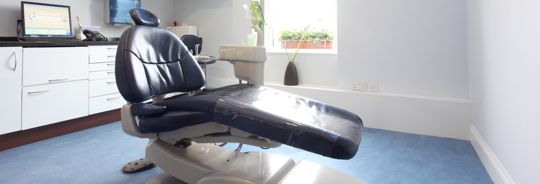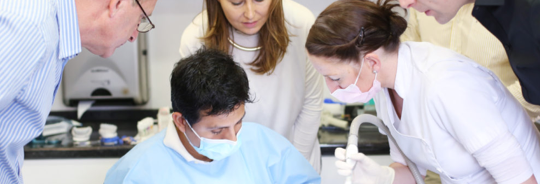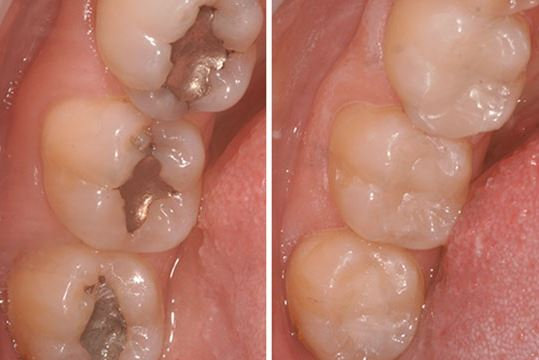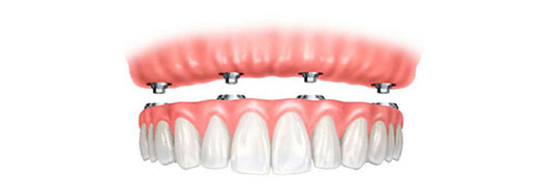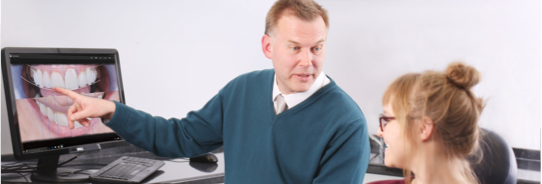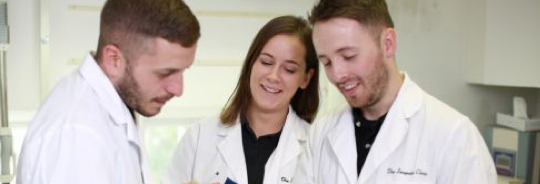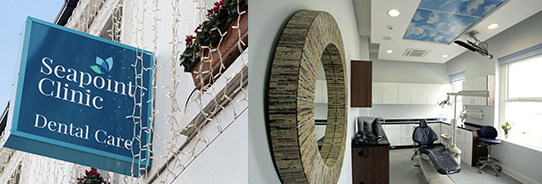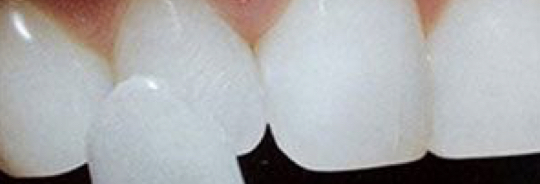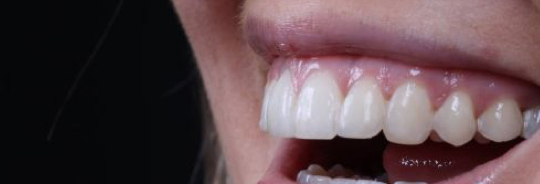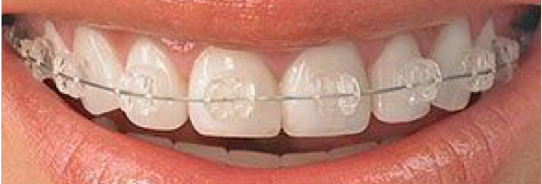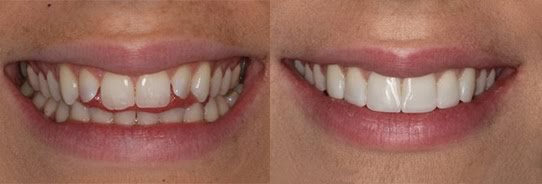
Blog
We post all the latest information here regularly so it's always up to date for you. If there is a topic you would like to have us cover please ask.
18 May 2012
Gum Disease: How to prevent it

At Seapoint Clinic, we offer a range of comprehensive dental hygiene services. This ranges from routine maintenance of healthy mouths to the treatment of periodontal (gum disease). Our treatment protocols are designed to meet individual patient needs with the aim of attaining gingival (gum) health for all of our patients. Healthy gums do not bleed, they are pink in colour and are tight to the teeth. Symptoms of periodontal disease include red, swollen, tender gums, bleeding while brushing or flossing and receding gums.
Gum disease is a serious infection that, left untreated, can lead to tooth loss. The word periodontal means ‘around the tooth’. Periodontal disease is caused by a chronic bacterial infection which attacks the gums and bone which support the teeth. Periodontal disease can attack one tooth or several teeth. It's caused when bacteria in plaque caused the gums to become inflammed.
It is not just a matter of oral discomfort, bad breath and loose teeth, however, but in fact it may affect your internal organs such as pancreas and heart. Gum disease, according to the study, can be linked to an increased risk of heart attack and stroke, as plaque accumulation can result in swollen arteries. A healthy body means healthy gums!
Gum Disease Symptoms
If you have one or two of the following symptoms that are more persistent than just occasional, it means you probably have gum disease.
- Bad breath
- Bleeding and receding gums
- Loose and shifting teeth (Keep in mind, however, that loose and malpositioned teeth alone may not indicate that you have gum disease, as loose teeth may be caused by other reasons such as fractured roots and bone loss)
- Swollen and tender gums
- Gum abscesses
Types of Gum Disease
- Gingivitis
Gingivitis is the mildest form of periodontal disease. It causes the gums to become red, swollen, and bleed easily. There is usually little or no discomfort at this stage. Gingivitis is often just caused by inadequate oral hygiene. Gingivitis is reversible with professional treatment and good oral home care.
- Periodontitis
Untreated gingivitis can advance to periodontitis. With time, plaque can spread and grow below the gum line. Toxins produced by the bacteria in plaque then irritate the gums. The toxins stimulate a chronic inflammatory response in which the body in essence turns on itself, and the tissues and bone that support the teeth are broken down and destroyed. Gums separate from the teeth, forming pockets (spaces between the teeth and gums) that become infected. As the disease progresses, the pockets deepen and more gum tissue and bone are destroyed. Often, this destructive process has very mild symptoms. Eventually, teeth can become loose and may have to be removed.
Periodontal Treatment
Gum disease is now the biggest cause of tooth loss in adults. It causes much more tooth loss than decay and the most worrying thing of all is that you probably don’t know you have it. There are often no signs or symptoms. You will usually feel no pain or looseness in the teeth. That is until it is too late. By then you will have lost massive amounts of jawbone and the teeth will have to be extracted.
What causes gum disease?
Gum disease is a bacterial infection of the gum and the bone surrounding teeth. The mouth has the highest amount of bacteria of any area in the body. With gum disease you get massive amounts of aggressive bacteria which damage the supporting structures of the teeth. Over time the bone is lost, the gums recede and you look “long in the tooth”. This is not a normal process of ageing. It is an infection and it needs to be treated aggressively.
How does gum disease progress?
Gum disease starts off with no symptoms at all. A dentist or hygienist can detect early signs but you will be unaware of it as an issue. If you do have any symptoms they may include red gums, bleeding on brushing occasionally or bad breath. Remember you will usually not have these but if you do it is a very clear sign you have a gum infection.
Initial gum disease causes no permanent damage and is reversible. This means that if you are treated adequately you can revert to how you were and keep your teeth healthy forever. It is important to remember that if you do not get treatment, you will progress to the next stage. How long this takes, however, varies from person to person.
The next stage of gum disease is where the bone starts to get eaten away. At this time the bacteria in the gums change to a very aggressive strain (Gram negative). Once the bone loss starts to take place, there is no way you can prevent it, without treatment. No matter how well you brush it will continue to occur under the gum. Bacteria will now be sheltered from the brush by a covering of tartar which you cannot remove. This allows the infection to spread and eat more and more bone over time. At this stage if you get effective treatment you will be able to return to health again but any bone you have lost so far is cannot be repaired.
If the gum disease is allowed to progress without effective treatment, the bone loss will continue unabated. The only time you may become aware of the problem is when your tooth becomes loose. At this stage it is too late and all we can do it take it out for you. You may have to wear dentures or may not be able to get a replacement tooth at all.
What will happen if I don’t treat the gum disease?
Gum disease will progress if left untreated, causing no pain until it is too late to save the teeth. The following may occur with a case of untreated gum disease:
- Teeth Moving
As the gum recedes from the tooth, due to the lack of underlying bone, the teeth start to move apart. This gives rise to a gappy smile and the teeth can become “bucked” in appearance.
- Gaps Between Teeth
As bone is lost, the gum becomes depressed between the teeth, leading to unsightly gaps between the teeth.
- Gum Recession
Gums recede as there is no bone to support them. This leads to you becoming “long in the tooth”. Teeth can also become very sensitive.
- Heart Disease
There is growing evidence that the bacteria in untreated gum disease can lead to heart problems, including heart attacks. Cardiologists recommend that gum disease be treated at an early stage.
- Loose Teeth
As the bone loss progresses your teeth will become loose. This makes it uncomfortable to chew and smile. You can no longer enjoy your food and you become very conscious of the wobbly teeth.
- Premature Ageing
With gaps between teeth and bone loss you will get notice changes in your facial profile. Once the teeth are lost, the face ‘collapses’ and you will notice a droop in the skin around your mouth and a sagging appearance overall.
- Missing Teeth
In a more serious case, the teeth must be taken out and you will need to wear dentures. These can be extremely uncomfortable and make it difficult to eat, smile and talk properly.
- Pain
Usually this only occurs at the very end. At this stage, our only option is to remove the tooth. Unfortunately, this tends to occur at the most inconvenient times of times. You may be left for some time with no tooth at all for this reason.
How can you treat gum disease?
As gum disease is a bacterial infection, the main treatment is the removal of the bacteria. Over time, the bacteria in the mouth builds up a protective wall of tartar, meaning you can no longer remove it with a brush. Your hygienist has the skills and tools to effectively remove this tartar and hence the bacteria. Once this wall has been removed, you will be able to access the area again for cleaning, and should be able to stop the bacterial from building up again.
With deep gum infections, we will also place antibiotic pastes under the gum. These will accelerate the healing from the area and kill off the bacteria that remain after tartar removal. In severe cases, we may also provide long term antibiotics such as tetracycline.
Why do I need to be seen for maintenance?
If you have gum disease once, you are at high risk of having it again. Gum disease is a chronic bacterial infection and so it can return if you are not effectively removing the bacteria on a daily basis. Studies have shown that if you are seen by a hygienist every 3 months a lot of the tooth loss can be prevented. Any area you may miss at home can be picked up by the hygienist and so tooth loss can be avoided.
Is treatment painful?
As your gums are infected and inflamed, they can be extremely sensitive. For that reason we will normally numb you up for gum treatment. Over time, as your gums become healthier, you may not need the numbing although it is always an option for nervous or anxious patients.
How long does treatment take?
- Initial Consultation
You will see the hygienist for 30 mins, where she will chart exactly what damage has been done to the bone and gum and decide what antibitiocs will be required. Initial treatment will begin with proper instruction on home care of the teeth and an initial scaling of the teeth.
- 1st Infection Treatment
This appointment will take an hour and you will be numbed up in the specific areas, prior to treatment. The tartar below the gum will be removed and the bacteria will be eliminated. Antibiotics will be placed as necessary to prevent any further infection.
- 2nd Infection Treatment
The second half of the mouth will normally be treated during this appointment.
- Review Visit
A full charting of the area will be repeated. This will check how you have responded to the treatment and check for any areas which may need more attention. Sometimes the pockets around the teeth are so deep that the gum needs to be lifted back to access them properly. This may require a separate surgical visit, which will incur a separate fee.
- Maintenance
We recommend allpatients who have previously suffered from gum disease to return for treatment every 3 months, long term. This has been proven to be the most effective method to keep any remaining healthy teeth. This will incur a standard fee.


